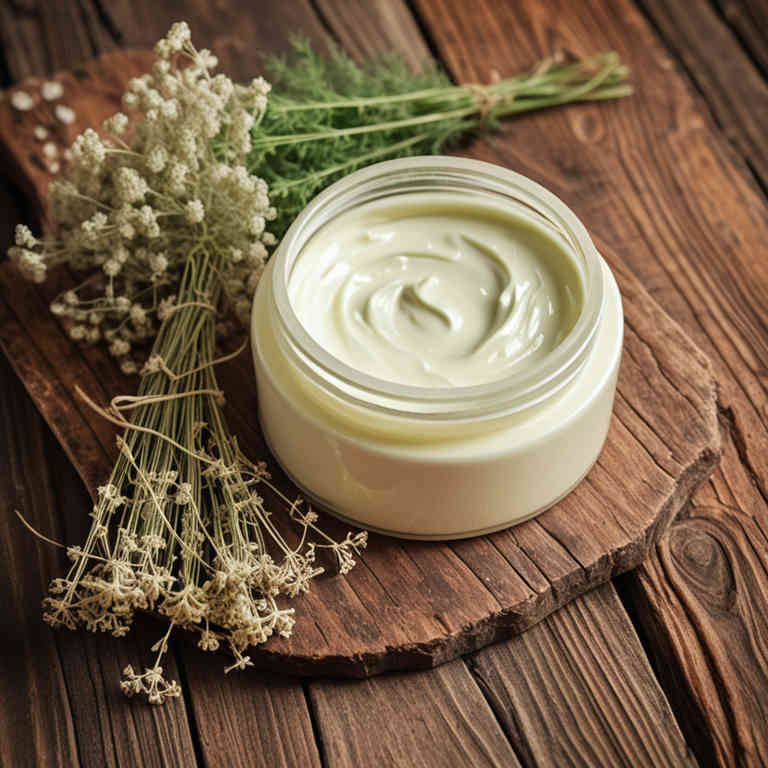Pimpinella anisum cream for medicinal use

Pimpinella anisum cream is a topical preparation made from the seeds of the anise plant, which are ground and mixed with a base such as butter or oil.
It is commonly used in herbalism to relieve symptoms of respiratory conditions like coughs and bronchitis due to its expectorant and anti-inflammatory properties. The cream may also be applied to soothe skin irritations or muscle aches. Its aromatic compounds help to open airways and ease breathing, making it a popular remedy in traditional medicine.
This preparation is often recommended for its gentle yet effective approach to addressing respiratory and skin-related ailments.
Uses
Pimpinella anisum cream has been used to treat respiratory and digestive ailments for centuries.
Historically, it was valued in traditional medicine for its soothing properties, often applied to relieve coughs, bronchitis, and gastrointestinal discomfort. In ancient Egypt and traditional Chinese medicine, anise was used to ease inflammation and promote digestion. Modern applications include its use in topical creams to alleviate muscle aches and skin irritations due to its anti-inflammatory and antispasmodic effects.
Today, it remains a popular natural remedy in both alternative and complementary medicine practices.
Benefits
Pimpinella anisum cream has health benefits such as reducing inflammation, soothing skin irritations, and promoting wound healing.
This cream is often used to treat conditions like eczema, psoriasis, and minor burns due to its anti-inflammatory and antimicrobial properties. The essential oils in anise, which is the main ingredient, help to calm the skin and reduce redness. It may also aid in improving circulation and relieving muscle aches when applied topically.
Overall, Pimpinella anisum cream is a natural remedy that supports skin health and provides relief from various dermatological issues.
Constituents
Pimpinella anisum cream active constituents include anethol, estragole, and fatty acids, which contribute to its therapeutic properties.
Anethol is known for its antispasmodic and carminative effects, making it beneficial for digestive health. Estragole provides antimicrobial and anti-inflammatory properties, supporting skin and respiratory wellness. The fatty acids in the cream help moisturize and protect the skin, promoting healing and reducing irritation.
Together, these components make Pimpinella anisum cream a valuable natural remedy for various health and skin care applications.
Preparation
To make Pimpinella anisum cream, start by gathering the necessary ingredients: 1/4 cup of anise seeds, 1 cup of coconut oil, and 1/2 cup of beeswax.
Begin by heating the coconut oil in a double boiler or a heat-safe bowl over a pot of simmering water. Once the oil is warm, add the beeswax and let it melt completely, stirring occasionally. Next, add the anise seeds and continue to stir until they are fully incorporated and the mixture is smooth.
Allow the cream to cool slightly before transferring it to a clean jar and letting it set completely before use.
Side Effects
Pimpinella anisum cream may lead to gastrointestinal discomfort, including nausea, vomiting, and diarrhea, due to its potent essential oils.
It can also cause allergic reactions in individuals sensitive to anise or related compounds. Prolonged use may result in skin irritation or sensitization, especially with frequent application. In some cases, it may interfere with certain medications, particularly those affecting the digestive system.
It is important to consult a healthcare professional before using this cream, especially for individuals with pre-existing health conditions.